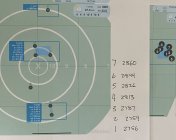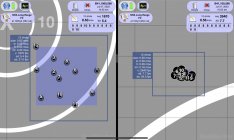Tod Hendricks
Gold $$ Contributor
I shot through a Shotmarker at 100 yards on the way to 1000 yards in an attempt to detect positive compensation at 100 yards. Something I saw in a YouTube video.
I ran this setup many times in different test formats, from ladders to multi shot groups. There was no backer or target in the 100 frame. In my tests there are instances that appear to be PC, unfortunately for me it was almost impossible to duplicate between range sessions. I’m thinking the PC node is too narrow to reliably stay in it. If you could test this just prior to a long range relay you may have a chance to utilize it.
What I did learn is, groups at 100 yards are almost useless as an indicator of bullet grouping at 1000 yards. They are very interesting though, the grid lines in the target pics are 1 MOA. All but 1 of the attached pics are single shot ladder tests.
This was a very easy setup for me, I ran it many many times as a secondary test. It got to the point where I hardly looked at the 100 data so I just stopped putting on the 100 yard Shotmarker.
I ran this setup many times in different test formats, from ladders to multi shot groups. There was no backer or target in the 100 frame. In my tests there are instances that appear to be PC, unfortunately for me it was almost impossible to duplicate between range sessions. I’m thinking the PC node is too narrow to reliably stay in it. If you could test this just prior to a long range relay you may have a chance to utilize it.
What I did learn is, groups at 100 yards are almost useless as an indicator of bullet grouping at 1000 yards. They are very interesting though, the grid lines in the target pics are 1 MOA. All but 1 of the attached pics are single shot ladder tests.
This was a very easy setup for me, I ran it many many times as a secondary test. It got to the point where I hardly looked at the 100 data so I just stopped putting on the 100 yard Shotmarker.















